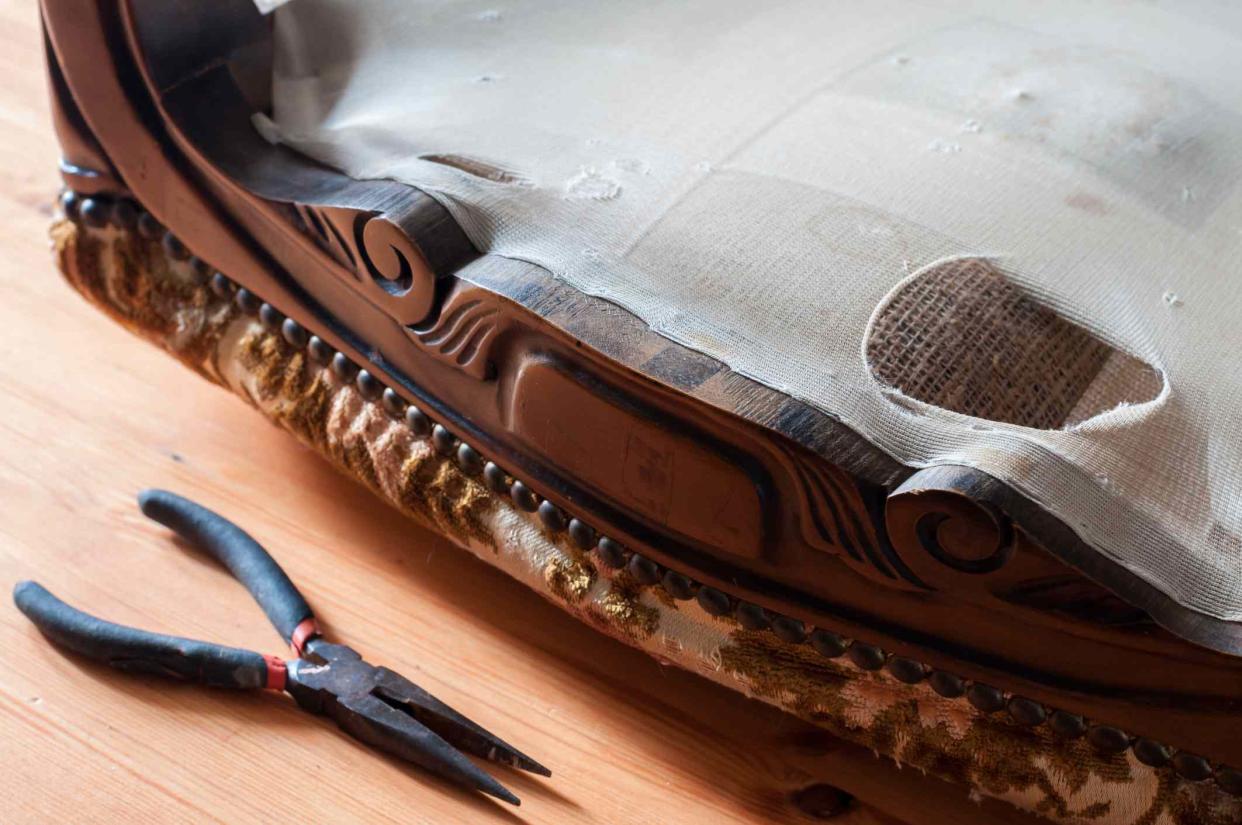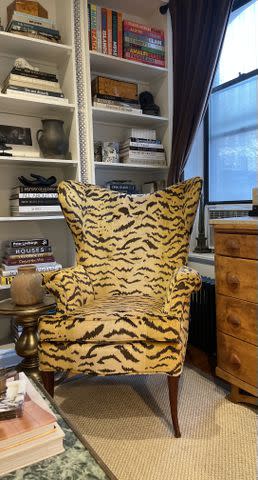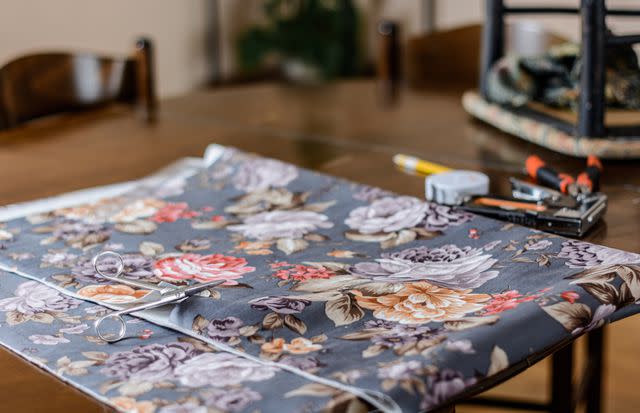5 Expert-Approved Upholstering Tips Every Beginner Should Know

Simone Madeo / Getty Images
If you've been curious about working with an upholsterer or taking on a reupholstery project of your own at home, you're going to want to keep reading.
Over the past six months, I went from never having worked with an upholsterer before to becoming a major re-upholstery fanatic. I'm someone who loves to fill my space with vintage furniture, and in particular, I simply cannot get enough vintage chairs—I have a bit of an obsession with seating.
I'm always coming across beautiful chairs with great bones while browsing my favorite secondhand stores and websites, and I've learned that a bit of reupholstery can majorly transform a dated piece into something contemporary and stylish.
Most recently, I called upon my go-to upholsterer—Jon Peloso of Stylish Decorators in New York City—to help me bring a vintage wingback chair back to life with the addition of Scalamandre's Le Tigre fabric. Because the process of hiring an upholsterer may seem daunting to some, I spoke with Peloso to learn more about this craft.
Below, he shares a bit about his extensive experience working in the reupholstery field and provides tips for what to keep top of mind when taking on a reupholstery project solo—DIYers, this one's for you!
Jon Peloso is the owner of Stylish Decorators, a company that specializes in furniture repair, restoration, and reupholstery, which is located in the Bronx, New York.
Peloso's Reupholstery Journey
Peloso, a New York native, grew up in the reupholstery world. "My father was in the business, and I learned as a child," he explains. "We used to hang around at the store."
When Peloso, now 62 years old, turned 18, he took over the company. In lieu of attending a trade school or receiving any formal training, Peloso simply learned his technique simply by watching his father and his helpers over the years. Peloso says that his approach to reupholstery hasn't changed over time. "Basically, the furniture is what changed, unfortunately," he explains, noting that much of today's furniture is made to be more disposable.
Most often, Peloso reupholsters dining room chairs, side chairs, and sofas. Since the pandemic, his workload has greatly increased. "People are fixing their homes more," he notes. "They have more time to look at their house."
Peloso enjoys working on any piece that has seen better days and greatly appreciates antiques. "My favorites are pieces that are really destroyed and I bring them back to life," he comments. "I like to take something old and make it beautiful again. Sometimes you can't believe that it's the same piece."

Courtesy of Sarah Lyon
If you're interested in taking on a reupholstery project at home, you'll want to keep Peloso's insights at the top of your mind. For one, think carefully about the type of piece you plan to reupholster on your own.
Stick to Simple
Peloso advises reupholstery novices to stick with simpler pieces such as kitchen and dining chairs. Oftentimes, the cushions on these chairs are easily removable. He advises against repairing broken springs—common in pieces such as recliners and sofa beds—on one's own. "There's a lot of tension on springs, and there's a certain way you're supposed to reattach a spring," he explains. "Sometimes, if you don't do it right, it can fly and hit you in the face."
Watch Beginner Videos
Additionally, Peloso encourages those starting out with DIY reupholstery to take a look at YouTube videos to get a better sense of basic techniques. It's also important to mark a center point on the fabric that you plan to use for a given project, he says. "You've got to work with the center when doing upholstery."
Prepare Enough Fabric
Another key factor is determining how much fabric one will need for a given project. "I've been doing it so long, I can do it without measuring," says Peloso. "But the best way is to measure."
Keep in mind that if your fabric is patterned, you'll want to order extra, as you will want to ensure that your print lines up everywhere on your piece.
For example, when Peloso helped me bring a secondhand wingback chair to life with eight yards of Scalamandre's iconic Le Tigre fabric, he made sure to pay close attention to the pattern's repeat, and this required working with a bit more fabric than usual. If you're using solid fabrics, you won't need to order as many yards, he shares.
Think Long-Term
When selecting fabric, you will also want to think about the mood you wish to evoke in a space. For example, I was drawn to this Scalamandre selection given that I have a penchant for animal print and wanted to add a bit of this timeless print to my home.
If you didn't know, this ombre fabric made its debut in the 1960s and is extremely versatile, it shines in eclectic, traditional, and contemporary spaces alike. If you're looking to create a focal point within your living room or bedroom, a patterned piece is an excellent way to do so.
However, if your home already features a multitude of prints, you may wish to stick with solid designs so as to ensure a given space doesn't appear too busy. Given that fabric can be quite expensive to order by the yard and may have a long lead time, you will want to think carefully about your selection before placing an order.
Get Creative
If you end up with extra fabric after completing your initial project, note that there are plenty of ways to get creative. Peloso has seen clients repurpose extra cuttings to create a number of different items.
He suggests turning extra fabric into a set of pillow covers or arm sleeves, using it to make a table runner for the dining room, designing a valance, or simply holding onto it in case a portion of the chair needs to be replaced down the line. You truly never know when it might come in handy!

StockPlanets / Getty Images

